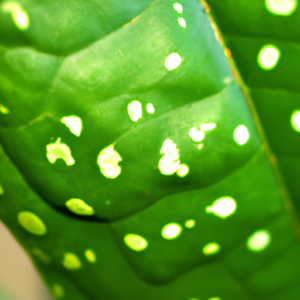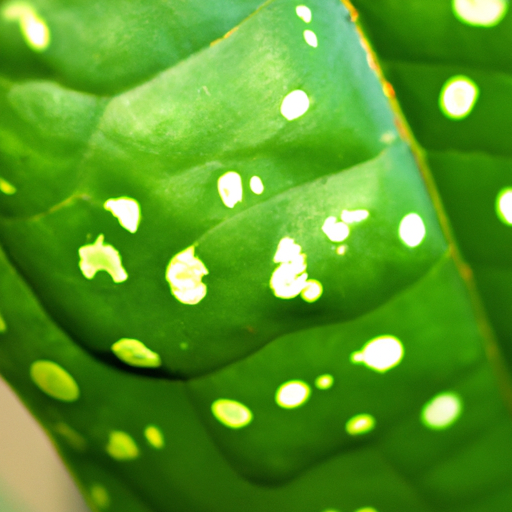Get Rid of Tinea Naturally and Effortlessly
Yo peeps! Are you tired of dealing with that pesky tinea infection? Not interested in using harsh chemicals on your skin? Well, you’ve come to the right place! Today, I’m going to share some natural treatments that can help you get rid of tinea without any harmful side effects. But first, let’s define what exactly tinea is.
Tinea is a skin fungal infection that can affect various areas of the body, including the scalp, feet, groin, and nails. It’s also commonly known as ringworm, jock itch, and athlete’s foot. Tinea is caused by a group of fungi known as dermatophytes and can affect anyone, regardless of age or gender.
Lucky for us, there are plenty of natural remedies that can help fight off tinea. Keep reading to learn more about them!
Step Right Up and Learn the Causes Behind Tinea!
So, what exactly is tinea? Well, let me tell you, it’s a fungal infection that can affect the skin, scalp, and nails. Here’s the deal – there are several different types of fungi that can cause tinea. Yep, you heard me right – there’s not just one fungus to blame! For example, ringworm on the scalp is usually caused by Trichophyton tonsurans, while athlete’s foot is often caused by Trichophyton rubrum. And get this – fungi thrive in warm, moist environments. So, if you spend a lot of time in tight-fitting shoes or damp clothes, you could be putting yourself at risk for tinea.
Now, I don’t want to scare you, but there are some factors that can increase your risk of developing tinea. For one thing, having a weak immune system can make you more susceptible to fungal infections. So, if you have an underlying medical condition like HIV or diabetes, you may want to take extra precautions to avoid tinea. And here’s another thing – if you frequently visit places where lots of people are in close quarters, like locker rooms, gyms, or swimming pools, you increase your risk of getting tinea. After all, that warm, moist environment I mentioned earlier? Well, it’s pretty much a fungi paradise.
Combat tinea with these natural remedies
Are you tired of relying on conventional antifungal treatments to get rid of tinea? Fortunately, there are a variety of natural remedies that can effectively treat the fungal infection. Here are some of the best natural treatments for tinea:

Tea tree oil is a popular natural remedy for tinea due to its antifungal properties. To use, dilute a few drops of tea tree oil with a carrier oil, such as coconut oil, and apply to the affected area several times a day.
Apple cider vinegar
Apple cider vinegar contains acetic acid, which can help to inhibit fungal growth. Mix equal parts of apple cider vinegar and water and apply to the affected area with a cotton ball several times a day. Be sure to dilute the vinegar before applying it, as undiluted vinegar can be too harsh.
Garlic
Garlic has antifungal properties that can help to combat tinea. Crush a few cloves of garlic and mix with coconut oil to create a paste. Apply the mixture to the affected area and leave on for 30 minutes before rinsing off.
Oregano oil
Oregano oil is a potent antifungal that can be applied topically to the affected area. Mix a few drops of oregano oil with a carrier oil, such as olive oil or coconut oil, and apply to the affected area twice a day.
Coconut oil
Coconut oil contains lauric acid, which can help to combat fungal infections. Apply coconut oil directly to the affected area several times a day.
Yogurt
Yogurt contains lactobacillus acidophilus, a natural probiotic that can help to restore the balance of bacteria and fungi on the skin. Apply plain yogurt to the affected area and leave on for 20 minutes before rinsing off.
It’s important to note that natural remedies may take longer to work than conventional antifungal treatments. It’s also important to continue treatment even after symptoms have subsided to prevent a recurrence of the infection. Consult with a healthcare professional before beginning any new treatment regimen.
How to Keep Tinea Away: My Expert Tips for Prevention and Self-Care
Hey guys, it’s your friendly neighborhood tinea expert here! I know how frustrating and uncomfortable this fungal infection can be, so I’ve compiled some tips to help you prevent tinea from coming back.
Keep Skin Clean and Dry
First things first, you need to make sure you’re keeping your skin clean and dry. Tinea loves warm, moist environments, so avoiding sweaty clothes and shoes can make all the difference. Take a shower or bath as soon as possible after working out or being in a humid environment and always dry yourself thoroughly afterwards.
Wear Loose, Breathable Clothing
I know we all love our skinny jeans and leggings, but tight clothing can trap sweat and create an ideal environment for tinea to thrive. Opt for loose, breathable materials like cotton or linen and avoid synthetic fabrics. Make sure to change your clothes daily, especially socks and underwear.
Avoid Sharing Items That Touch the Skin
Tinea is highly contagious and can spread through contact with contaminated items. Try to avoid sharing things like towels, razors, and even shoes or socks if possible. If you do share items, make sure to disinfect them thoroughly afterwards.
Wash Clothes Regularly
To prevent tinea from spreading to your clothes and linens, you should wash them regularly in hot water and dry them on high heat. Avoid wearing the same clothes multiple days in a row, especially if you’ve been sweating in them.
Remember, prevention is always better than a cure! By following these simple self-care tips, you can protect yourself from tinea and keep it from coming back. Stay healthy and good luck!
Wrapping it Up: My Final Thoughts on Natural Tinea Treatments
Now that we’ve gone through all of the natural treatments for tinea, you might be wondering, which one is the best? The answer is, it depends on your individual case. Some people may respond better to certain treatments than others, so it’s important to experiment and find what works for you.
Remember that prevention is key when it comes to tinea. Keeping your skin clean and dry, wearing breathable clothing, and avoiding sharing items that touch the skin are all important ways to prevent tinea from occurring. If you do end up with tinea, don’t worry – with the right treatment and self-care, it can be easily treated and won’t cause any long-term damage.
Overall, I highly recommend trying natural tinea treatments before resorting to harsher chemical options. Not only are they often more affordable, but they also have fewer potential side effects. And if you’re still struggling to get rid of tinea, don’t be afraid to reach out to a healthcare provider for additional guidance.
If you want to learn more about treating different types of tinea, check out this helpful resource from Bright Side Beauty: https://brightsidebeauty.com/treating-common-types-of-tinea/.
